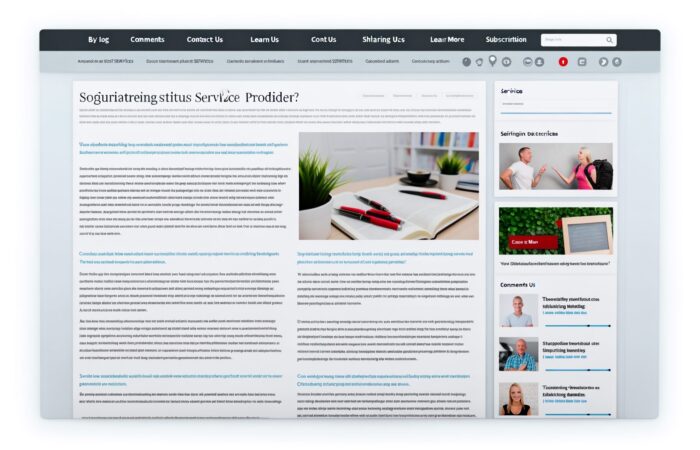If you’re eager to delve into the world of interviewing and profile writing, you’ve landed in just the right spot. Whether you’re a budding journalist, a curious student, or anyone in between, mastering the art of crafting a compelling profile involves more than just asking questions. It’s about connecting deeply with your subject and telling their story in a way that resonates with your audience.
Let’s demystify what profile writing actually entails. Profile writing is a form of storytelling that offers insight into the person’s character, background, and life path. It usually combines elements of biography and personal narrative, allowing readers to feel as though they truly know the person featured.
And how do we gather such rich, detailed content? Through effective interviewing. This means not only having a knack for asking the right questions but also listening actively and creating a rapport with your interviewee. So, let’s break down some foundational tips that will set the stage for your interviewing prowess:
- Do Your Homework: Before you even think about firing off questions, make sure you know who you’re talking to. A bit of preliminary research can help you frame better, more personalized questions that will engage your subject.
- Set the Tone: The best profiles often come from a place of comfort and openness. Work on making your interviewee feel at ease – a relaxed chat can lead to more genuine responses.
- Listen Actively: While it’s important to guide the conversation, it’s equally important to listen. Sometimes, the most interesting details come from the unplanned detours in the conversation.
- Think Beyond the Obvious: Sure, facts are important, but the essence of a great profile lies in the texture – the quirks, anecdotes, and emotions that bring the story to life. Don’t shy away from exploring these less trodden paths.
Remember, the goal isn’t just to inform but to engage and captivate. Whether you’re painting a portrait of a local hero, a groundbreaking scientist, or a charismatic artist, your approach to interviewing and writing can bring out the shades of their personality, making your profile not just informative, but incredibly compelling.
Now that we’ve got the basics down, it’s time to roll up your sleeves and dive deeper. With passion, preparation, and a bit of practice, you’ll be on your way to creating insightful, engaging profiles that do more than scratch the surface. They might just inspire, intrigue, or even change a mind or two.
Ready to get started? Let’s turn those curiosities into conversations and those conversations into stories worth reading. After all, every person has a story to tell—it’s up to you to bring it to life!
Understanding Your Subject: Research Techniques for In-depth Profiles
The foundation of a stellar profile is rock-solid research. Let’s explore some effective techniques to help you understand your subject inside out, making your profile as enlightening as it is enchanting.
Start with the Basics
First things first: start with a broad brush. Gather basic information about your subject – think biographical details like background, education, and career milestones. This initial phase acts like a scaffold on which you’ll build your masterpiece. Websites, old interviews, biographies, and news articles are gold mines for this stage.
Deep Diving Into Digital Havens
Once you’ve got the basics down, it’s time to plunge into the digital deep end. Social media profiles are not just for memes; they’re windows into personal interests, passions, and opinions. Scour through Twitter feeds, Instagram posts, or LinkedIn profiles. You’d be surprised at how much you can learn about a person’s professional and personal life through these channels.
Go Beyond Google
Google is great, but let’s not stop there. Dive into specialized databases and libraries. Academic journals and books can provide a nuanced understanding, especially if your subject is known for their scholarly work or research. Tools like JSTOR, Google Scholar, or even the digital archives of universities can be incredibly helpful.
Talk to People
Yes, your interview will eventually involve your subject, but why not talk to people who know them before that? Reach out to colleagues, friends, or family members who can provide different perspectives on your subject. These conversations can unveil aspects of the person that are not public knowledge, adding layers to your profile.
Keep an Eye on the Details
As you gather data, keep an eye out for details that paint a picture. Maybe it’s a penchant for vintage guitars, a habit of hiking every weekend, or a commitment to community service. These tidbits can transform your profile from a flat narrative to a vibrant canvas, bringing your subject to life.
The Fun Part: Connecting the Dots
Research can be a rabbit hole, but the real magic lies in connecting the dots. With all the information at your disposal, start looking for patterns, contradictions, and insights. These will not only enrich your understanding but also guide you in crafting questions that are both insightful and provocative.
So there you have it, a handful of tools to kickstart your journey into creating compelling and well-researched profiles. Whether you’re profiling a CEO, an artist, or the unsung hero next door, it all starts with understanding your subject. And remember, the more curious you are, the more intriguing your profile will be. Happy researching!
Crafting Engaging Questions for Impactful Interviews
So, you’ve got an interview lined up and you want to make it truly memorable, right? Crafting questions that resonate not only with your subject but also engage your audience is more of an art form than a science. But don’t worry; I’m here to guide you through creating those perfect, engaging questions that will make your interview sparkle.
Context is king. Each question should tie into the larger narrative you’re trying to weave. It’s not just about firing away any question that comes to mind; it’s about crafting questions that build on each other and create a flowing, coherent story.
Begin with Open-Ended Questions
- Encourage storytelling: Start with broad questions that encourage your subject to open up and share their story. Questions like “Can you walk me through…” or “What was it like when…” are great openers.
- Avoid yes or no answers: These tend to stump the flow of conversation. Opt for “How” and “Why” questions to get your subject thinking and speaking in narratives.
Dive Deeper with Follow-Ups
The magic often lies in the follow-up. Listen actively, and when something intriguing comes up, dive deeper. “You mentioned XYZ, could you tell me more about that?” These types of questions show that you’re engaged and value the details of their responses, which in turn, encourages them to share more.
Get Personal – Tactfully
While it’s important to get personal to paint a full picture, it’s just as crucial to tread carefully. Gauge how comfortable the interviewee is with personal topics. A good indicator? If they give short answers to personal questions, it might be time to switch gears back to something more general.
The Unexpected Twist
Every now and then, throw in a curveball question that they might not see coming. This doesn’t mean you should be inappropriate or off-topic, but rather creatively related to their interests or experiences. For instance, if interviewing a chef who specializes in Italian cuisine, you might ask, “If you were stranded on a desert island and could only take one pasta dish with you, what would it be and why?” This keeps the mood light and gives them a chance to reveal more personal likes and quiracies.
Final Thoughts
Remember, the best interviews feel like a captivating story rather than a rigid Q&A session. Your role is akin to that of a director – guiding the narrative but allowing the interviewee to shine as the star. Be adaptable, and don’t be afraid to veer off your pre-planned questions if the interview flows into interesting, uncharted territories.
Embrace the process, and you’ll not only come away with a great interview but also a richer understanding of your subject. Happy interviewing!
The Role of Setting in Enhancing Interview Atmosphere
Let’s dive into a rarely discussed but crucial aspect of conducting interviews—the setting. Ever wondered why some interviews feel flat despite great questions and a prepared interviewer? Often, the secret ingredient is the atmosphere. The setting of your interview can significantly impact its flow and outcome. So, let’s unpack some tips on how to use this to your advantage!
Choosing the Right Environment
Selecting the right environment is critical. Imagine trying to discuss personal and emotional details in a noisy coffee shop—probably not the best choice, right? You want a setting that matches the tone of the conversation. For formal or professional profiles, a quiet office or a reserved meeting room might be ideal. On the other hand, for more personal stories, a cozy living room or a peaceful park could set the right mood.
Think Comfort
Comfort is key—both for you and the interviewee. If the person you’re interviewing isn’t at ease, it’ll show in their responses. Comfort can mean different things depending on the context: a comfortable chair, a quiet room, or even a familiar setting. Ask your subject where they’d feel most comfortable. You’ll be surprised how this small consideration can enhance the depth and quality of your interview.
Lighting and Noise
Don’t overlook the basics like lighting and background noise. Natural light can make the setting warm and inviting, whereas poor lighting might not only affect the mood but also your interview footage if you’re recording. Similarly, minimize background noise as much as possible. Unwanted sounds not only distract but can also interfere with your recording equipment, making transcription a nightmare!
Visual Backgrounds That Speak
What’s behind your subject in a video or photo shoot can tell a story of its own. A bookshelf filled with literature for a prolific writer or a studio backdrop filled with canvases for an artist; these settings not only add depth to your visual but also help convey part of the story you are trying to tell. This doesn’t mean you need a themed backdrop for every interview, but consider what the surroundings convey about the subject.
A Personal Touch
Adding a personal touch can help break the ice. If you’re interviewing someone in their personal space, show interest in items that are important to them, be it photos, trophies, or art. This not only warms up the conversation but also offers insight into what defines and matters to your subject.
Final Thoughts
Remember, the perfect setting doesn’t have to be fancy or over-thought; it just needs to be appropriate for the emotion and content of the interview. Think of the setting as a silent participant in your interview—it doesn’t speak, but it can say a lot. So next time you’re planning an interview, take a moment to consider the setting — it might just be the key to unlocking a more engaging and revealing conversation.
Techniques for Recording and Transcribing Interviews
If you’ve ever found yourself in the throes of an interview, clinging to every word your subject says, you’ll know the panic of trying to remember it all. Fear not, because I’m here to chat about recording and transcribing interviews—a lifesaver in the world of journalism and profile writing. So, grab your favorite drink, and let’s dive in.
Choosing the Right Tools
First off, let’s talk gadgets. Whether you’re a tech newbie or a gadget guru, there’s a tool out there that will fit your style. A good digital recorder is a must-have, and it doesn’t have to break the bank. Look for one with clear sound quality and a reliable battery life. Oh, and don’t forget your smartphone! It’s actually a great backup device. Plenty of apps are designed specifically for recording interviews, so feel free to explore what works for you.
Pro Tip: Always check your equipment before the interview. Nothing’s worse than a recorder that gives up mid-sentence!
Getting the Consent
Imagine this: you’ve had a great interview, and you’re ready to share the insights with the world. But wait—did you get permission to record? Always make sure to get consent from your interviewee to record. It’s not just polite; it’s crucial from a legal standpoint too. A simple “Is it okay if I record this?” will usually do the trick.
The Art of Transcribing
Now, let’s tackle transcribing. If you think recording is merely hitting a button, transcribing is where the real magic happens. You’ll need to decide whether to go old school and type out everything yourself or use transcription software. Both have their perks!
- Manual Transcription: It allows you to really get to know the material, although it can be time-consuming.
- Automated Software: These can save heaps of time and can be surprisingly accurate. Tools like Otter.ai or Rev.com come highly recommended.
Remember: Whether manual or automated, you’ll likely need to go through the transcript and clean it up. Keep an ear out for those ums, uhs, and colloquialisms that might make your subject sound less polished.
Storing Your Records
Last but definitely not least, let’s talk about storage. Always have multiple backups of your recordings and transcripts. Use cloud storage options like Google Drive or Dropbox for easy access and peace of mind. After all, you wouldn’t want to lose your hard-earned work to a technical glitch, right?
And there you have it—your quick guide to navigating the world of recording and transcribing interviews. Armed with your trusty recorder, newfound knowledge, and a dash of caution, you’re ready to capture every word of your next big interview. Happy recording!
Writing the Profile: Structure and Storytelling Elements
So, you’ve completed your interview and have a treasure trove of audio files or maybe pages full of notes. Now comes the exciting part — turning all that raw material into a compelling profile that captures the essence of your subject. Let’s dive into how you can structure your piece and weave in storytelling elements to keep your readers hooked!
Start with a Bang!
First impressions matter. Start your profile with a strong, attention-grabbing opening. Think of an anecdote, a surprising fact, or a poignant quote from your subject. This isn’t just about being catchy; it’s about giving a glimpse into the soul of your piece, setting the tone for what’s to come.
The Art of Structuring
Structure is the backbone of your profile. A solid structure ensures that your piece flows logically and smoothly, guiding the reader through the narrative you’re weaving. Here’s a simple way to plan it:
- Introduction: Hook your reader, as mentioned, and introduce your subject briefly.
- Main Body: This is where you flesh out your subject’s story. Break it down into manageable sections or themes. Perhaps one section focuses on the subject’s background, another on a major life event, and another on their current projects or ambitions.
- Conclusion: Wrap up the story by reflecting on the subject’s future plans, their impact on their field, or what insights they have offered. This is a great place to circle back to your opening note, creating a satisfying bookend to your narrative.
Embrace Storytelling Techniques
Storytelling isn’t just for fiction. Profiles come alive when you employ elements commonly found in storytelling:
- Show, Don’t Tell: Use vivid descriptions and active voice to show your subject in action. Instead of saying “John is a passionate teacher,” describe a scene in his classroom that demonstrates his passion.
- Dialogue: Incorporating dialogue can break up the narrative and add authenticity. When you can, let your subject speak for themselves.
- Pacing: Just like in a good novel, the pace of your narrative can build suspense or give the reader a break. Mix longer, descriptive passages with shorter, impactful statements to keep the reader engaged.
Final Touches
The final step? Revision! Go through your draft and see if the structure feels right. Are the transitions smooth? Does the story flow logically? Is there a good balance between showing and telling? Get a second opinion if possible, and be open to feedback.
Remember, every profile you write is a chance to hone your craft. With each subject, you learn a little more about humanity and storytelling. So keep writing, keep experimenting, and most importantly, have fun with it!
Optimizing Your Interview Content for SEO
So, you’ve conducted a fabulous interview and transformed it into a compelling profile. Awesome! But wait, how do you make sure people actually find and read your masterpiece? Enter the world of SEO, or Search Engine Optimization. Let’s dive into how you can give your profile the spotlight it deserves on the internet.
Why Focus on SEO?
Think of SEO as the magic that helps your content climb the search engine ranks, making it more visible to your audience. It’s like putting up a giant billboard in the digital highway. The better your SEO, the more likely people are to stumble upon your work when they’re surfing the web. Let’s break down some key strategies to make your interview content SEO-friendly.
Keywords are Key
- Research Your Keywords: Before you even start writing, figure out which keywords your target audience might use to find content like yours. Tools like Google Keyword Planner or SEMrush can be super handy here.
- Incorporate Naturally: Once you’ve picked your keywords, sprinkle them throughout your content. That includes the title, headings, and the body of your profile. Just remember, stuffing keywords everywhere can actually hurt your SEO, so keep it natural and relevant!
Make it Mobile-Friendly
Ever tried reading a desktop-optimized article on your phone? It’s not fun. Google knows this and prefers content that looks good on mobile devices. Ensure your website is responsive, meaning it adjusts smoothly to different screen sizes. Not only does this help with SEO, but it also keeps your readers happy, no matter the device they’re using.
Speed Things Up
Page speed is a big deal. If your site loads slowly, potential readers might bounce before they even see your interview. Use tools like Google PageSpeed Insights to find out how your site is performing and follow the recommendations to improve load times.
Engaging Meta Descriptions
Your meta description is the short text snippet that appears under your web page’s title in search results. It’s your elevator pitch to encourage people to click through. Make sure it’s enticing and includes a key phrase or two from your list of keywords.
Link It Up
Internal and external links are gold in SEO. Linking to other relevant articles on your site helps search engines understand and trust your content. Similarly, having external sites link to your interview can boost your credibility and pull in readers from other places.
Finally, don’t forget the power of social media. Share your profile across your networks and encourage others to do the same. Social signals don’t directly impact SEO rankings, but they drive traffic, and more traffic can lead to better SEO.
In wrapping up, optimizing your interview content for SEO isn’t just about playing to the algorithms. It’s about making sure your hard work gets the readership it deserves. With the right SEO strategies, your profile won’t just be another drop in the digital ocean. It’ll be a shining beacon, drawing readers in. Happy optimizing!











No Comment! Be the first one.